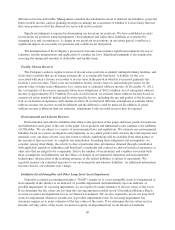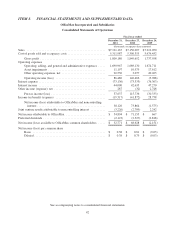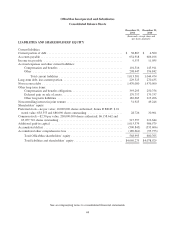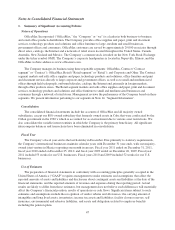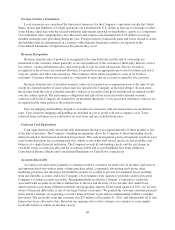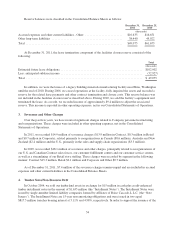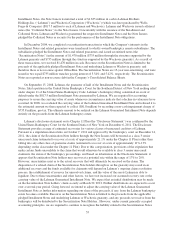OfficeMax 2011 Annual Report Download - page 79
Download and view the complete annual report
Please find page 79 of the 2011 OfficeMax annual report below. You can navigate through the pages in the report by either clicking on the pages listed below, or by using the keyword search tool below to find specific information within the annual report.Notes to Consolidated Financial Statements
1. Summary of Significant Accounting Policies
Nature of Operations
OfficeMax Incorporated (“OfficeMax,” the “Company” or “we”) is a leader in both business-to-business
and retail office products distribution. The Company provides office supplies and paper, print and document
services, technology products and solutions and office furniture to large, medium and small businesses,
government offices and consumers. OfficeMax customers are served by approximately 29,000 associates through
direct sales, catalogs, the Internet and a network of retail stores located throughout the United States, Canada,
Australia, New Zealand and Mexico. The Company’s common stock is traded on the New York Stock Exchange
under the ticker symbol OMX. The Company’s corporate headquarters is located in Naperville, Illinois, and the
OfficeMax website address is www.officemax.com.
The Company manages its business using three reportable segments: OfficeMax, Contract (“Contract
segment” or “Contract”); OfficeMax, Retail (“Retail segment” or “Retail”); and Corporate and Other. The Contract
segment markets and sells office supplies and paper, technology products and solutions, office furniture and print
and document services directly to large corporate and government offices, as well as to small and medium-sized
offices through field salespeople, outbound telesales, catalogs, the Internet and, primarily in foreign markets,
through office products stores. The Retail segment markets and sells office supplies and paper, print and document
services, technology products and solutions and office furniture to small and medium-sized businesses and
consumers through a network of retail stores. Management reviews the performance of the Company based on these
segments. We present information pertaining to our segments in Note 14, “Segment Information”.
Consolidation
The consolidated financial statements include the accounts of OfficeMax and all majority owned
subsidiaries, except our 88%-owned subsidiary that formerly owned assets in Cuba that were confiscated by the
Cuban government in the 1960’s which is accounted for as an investment due to various asset restrictions. We
also consolidate the variable interest entities in which the Company is the primary beneficiary. All significant
intercompany balances and transactions have been eliminated in consolidation.
Fiscal Year
The Company’s fiscal year-end is the last Saturday in December. Due primarily to statutory requirements,
the Company’s international businesses maintain calendar years with December 31 year-ends, with our majority-
owned joint venture in Mexico reporting one month in arrears. Fiscal year 2011 ended on December 31, 2011,
fiscal year 2010 ended on December 25, 2010, and fiscal year 2009 ended on December 26, 2009. Fiscal year
2011 included 53 weeks for our U.S. businesses. Fiscal years 2010 and 2009 included 52 weeks for our U.S.
businesses.
Use of Estimates
The preparation of financial statements in conformity with accounting principles generally accepted in the
United States of America (“GAAP”) requires management to make estimates and assumptions that affect the
reported amounts of assets and liabilities and disclosures about contingent assets and liabilities at the date of the
financial statements, and the reported amounts of revenues and expenses during the reporting period. Actual
results are likely to differ from those estimates, but management does not believe such differences will materially
affect the Company’s financial position, results of operations or cash flows. Significant items subject to such
estimates and assumptions include the recognition of vendor rebates and allowances; the carrying amount of
intangibles and long lived assets; inventories; income tax assets and liabilities; facility closure reserves; self
insurance; environmental and asbestos liabilities; and assets and obligations related to employee benefits
including the pension plans.
47





